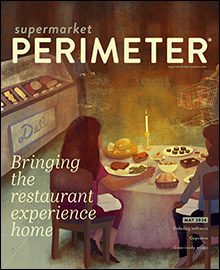BrightFarms has new state-of-the-art greenhouses in Yorkville, Ill.; Lorena, Texas; and Macon, Ga. That means the company will be able to bring fresh, pesticide-free greens to even more communities, said Jess Soare, senior director of marketing.
“By the end of 2025, BrightFarms will be reaching over two-thirds of U.S. households, offering fresh, locally grown salad options while remaining committed to the health of our consumers and the planet.” There’s plenty of demand to meet all of that new production, Soare said.
More and more consumers are looking for freshness, sustainability, and high-quality produce. According to BrightFarms’ commissioned study with GutCheck on salad consumer attitudes, 67% of consumers prioritize “freshness of leaves” when selecting leafy greens.
In addition, a YouGov survey for Whole Foods found that 70% of Gen Z supports climate-smart agriculture, 55% are willing to pay more for environmentally sustainable products, and over half prefer brands that prioritize local sourcing.
“These trends highlight how greenhouse-grown produce aligns with evolving consumer values,” Soare said.
Consumers are increasingly choosing greenhouse-grown produce over traditional field-grown options. Data from Nielson indicates that all growth in the salad category is coming from the indoor farming segment, while organic has declined, and conventional field-grown lettuce has stagnated.
“Consumers are recognizing the value of fresher, sustainably produced greenhouse-grown options that meet their quality and environmental expectations.”
Recent advancements in controlled environment agriculture, such as automated climate control systems and precision irrigation, have revolutionized greenhouse farming, Soare added.
BrightFarms’ use of Kubo UltraClima greenhouses enables optimization of temperature, humidity, CO2, and light levels, ensuring peak freshness and quality year-round. Not only does this technology allow for year-round production, it allows for it to be done in any climate, whether it’s in the heat of Texas or the cold winters of Illinois.
“These innovations help to reduce water usage, eliminate application of harmful pesticides to crops, and reduce food miles, addressing both consumer demand for sustainability and operational efficiency.”
The unpredictability of weather has heightened the demand for greenhouse farming, as controlled environments provide reliability and consistency that traditional agriculture cannot match, Soare said.
Greenhouse acreage is expanding because it shields crops from extreme weather events, ensuring year-round production and supply chain stability.
.png?height=667&t=1709054980&width=1080)
